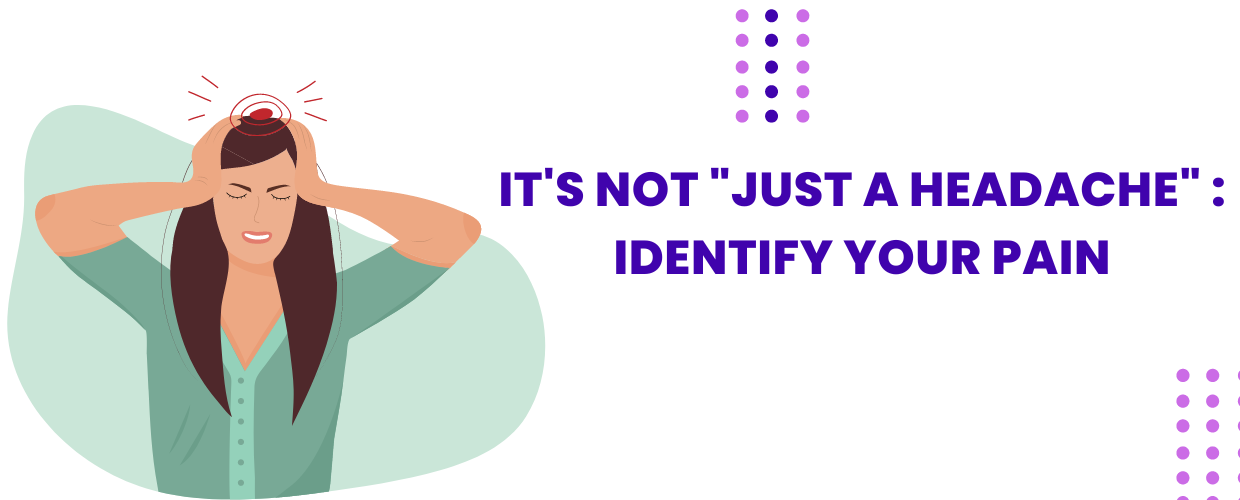Headaches are a very common condition that most people have experienced one to several times in their lives. They mainly comprise pain symptoms in the head, face, and neck region. Often, they are neglected as being “manageable”. Some headaches can be debilitating and have a significant impact on the functioning and quality of life. It is important to correctly identify the type and cause of headaches and receive appropriate treatment for the same. Here, we discuss some commonly seen headache syndromes and their treatment options.
TYPES OF HEADACHES
PRIMARY HEADACHE
The pain itself is the problem and there is no underlying condition contributing to it. These headaches may not be life-threatening but cause significant dysfunction in daily living. The following are some of the important primary headaches we should be aware of.
a. MIGRAINE: Repetitive, throbbing, one-sided, moderate to severe pain, associated with nausea, sensitivity to bright lights and loud sounds, lasting for 4-72 hours each time. Usually, the person is completely fine in between episodes, and triggers such as sleep deprivation, dehydration, specific food and smells, or hormonal fluctuations can precipitate headache attack. Some people also report feeling an “aura” before the headache starts, characterized by reduced vision, seeing lines or colours or even certain pungent smells.
b. TENSION HEADACHE: Heaviness in the head, band-like constricting sensation, mild to moderate aches and pains, which are usually less disruptive than the others.
c. CLUSTER HEADACHE: Most severe of the primary headaches, short duration, one-sided, severe to debilitating pain accompanied by redness and watering of eyes and nose. Commonly seen in young men and in smokers.
SECONDARY HEADACHES
Pain is caused by another condition underlying the brain. Usually rare, however they are more serious, severe and need urgent attention. Examples of some diseases that cause secondary headaches are brain tumours, aneurysms, infections, and trauma.
There are certain specific signs indicating a possible secondary headache and these require immediate medical attention. Such signs are called “RED FLAG SIGNS”, and some are as follows:
i. Sudden onset intense pain
ii. Change in pattern of previously occurring headaches – “worst headache of your life”
iii. Stiff neck, rash, vomiting
iv. Fever of 100.4F or higher
v. Significant weight loss
v. Confusion, slurred speech
vii. Partial or complete loss of function of limbs
viii. Visual loss
ix. New-onset headache in elderly population or in children
x. Altered consciousness or seizures
TREATMENT OF HEADACHES
Correct diagnosis is essential for appropriate management. Your doctor will take a detailed history to understand the exact nature, triggers, and effect of headaches. Certain investigations like blood checkup, x-ray sinus and face, CT, or MRI Brain with or without contrast, are ordered for.
Furthermore, treatment can be done using medications or certain other specialised techniques. In the event of secondary headaches, the underlying condition is managed.
1) RESCUE MEDICINES: OTC drugs like paracetamol, ibuprofen and naproxyn, aspirin, triptans for migraine attacks
2) PREVENTIVE MEDICINES: beta blockers like propranolol, antidepressants like amitriptyline or nortriptyline, anticonvulsants like sodium valproate or topiramate, gabapentin
3) OTHERS: Biofeedback, stress management, relaxation techniques
PREVENTION IS BETTER THAN CURE
The key to preventing headaches is to be able to correctly identify the triggers. Triggers are person-specific, and hence you must be alert and aware to avoid further headache episodes. Regular exercise or yoga, staying hydrated, having balanced meals, avoiding caffeinated drinks, and getting proper sleep is essential.
CONCLUSION
Headache is a commonly faced health condition in today’s world. There are many different types and causes of headaches. Appropriate diagnosis and treatment can improve outcomes and quality of life in those suffering. Reach out to healthcare professionals for support and guidance.






